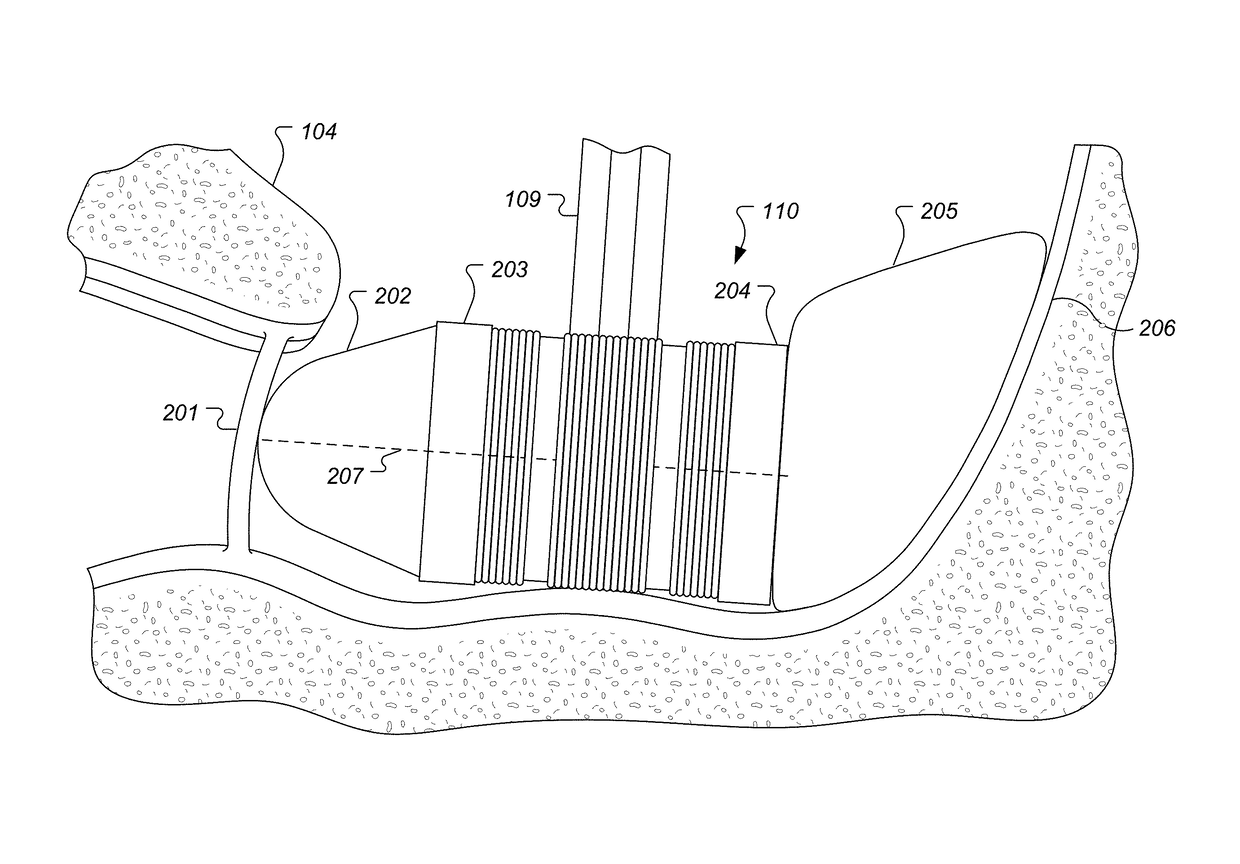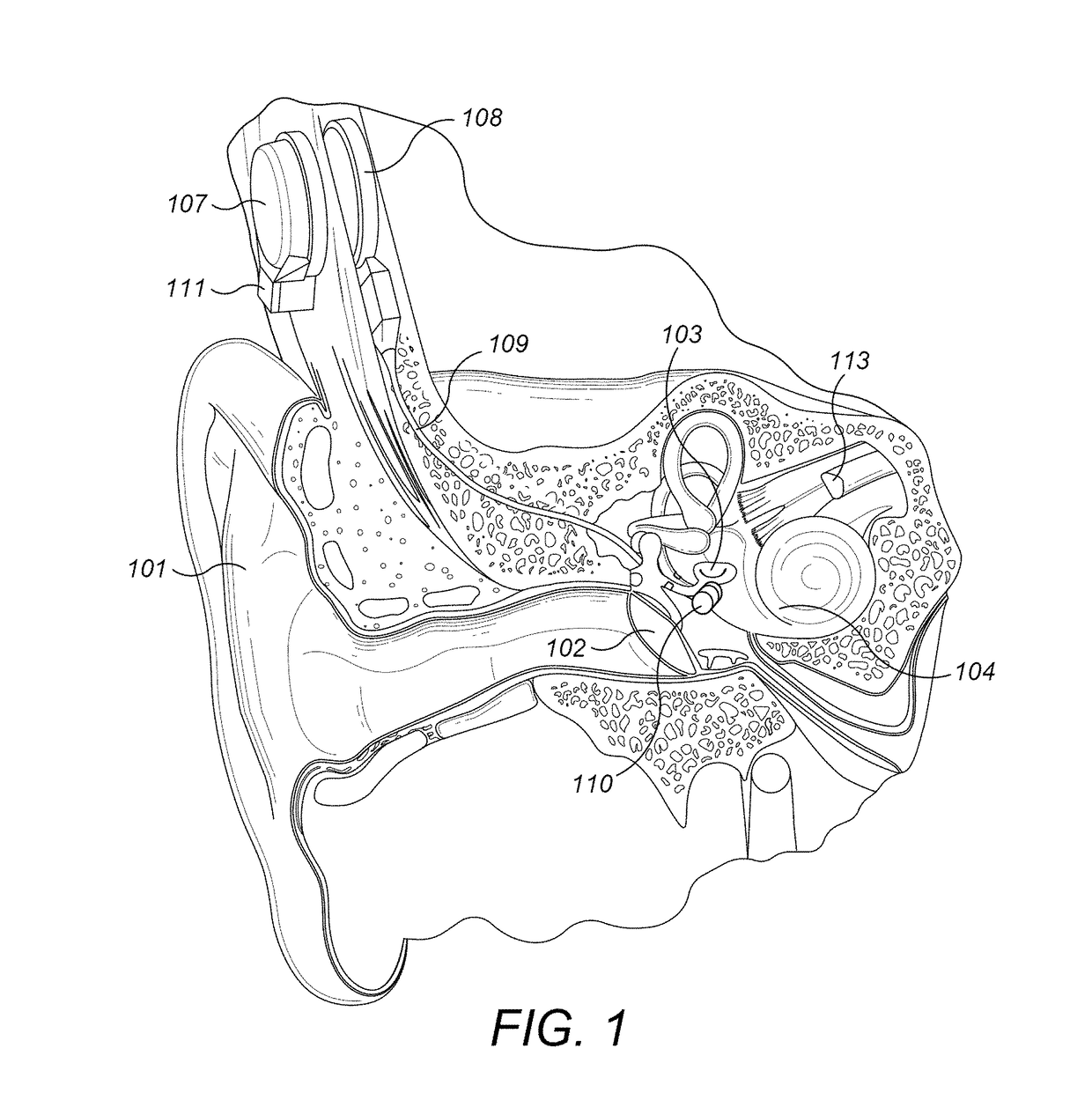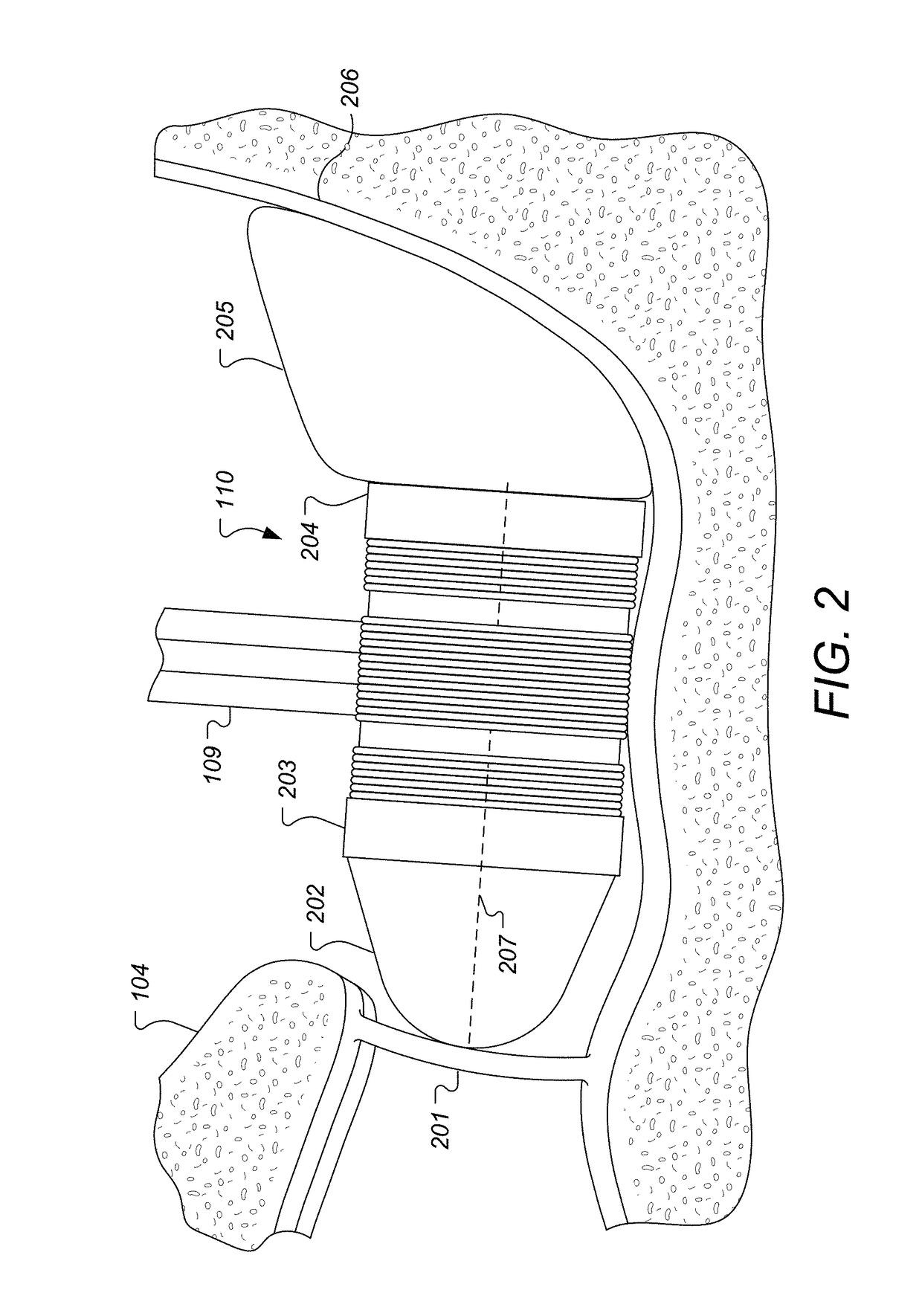S-Shaped Coupling Spring for Middle Ear Implants
a technology of middle ear implants and coupling springs, which is applied in the field of medical implants, can solve problems such as non-reproducible results
- Summary
- Abstract
- Description
- Claims
- Application Information
AI Technical Summary
Benefits of technology
Problems solved by technology
Method used
Image
Examples
Embodiment Construction
[0015]Various embodiments of the present invention are directed to a middle ear implant arrangement based on an improved loading spring for a middle ear transducer. The spring is adapted to develop a loading force that presses against one end of the electromechanical transducer to firmly engage it against an outer surface of the patient's cochlea (e.g. the round window) with a force that is within a defined range and entirely along the center axis of the transducer, which is also a central axis of the loading spring. For example, the middle ear transducer may be an FMT 110 as shown in FIGS. 1 and 2 with an inner end 203 and an outer end 204. The ends are connected by a center axis 207, and with a conical cochlear engagement member 202 at the inner end 203 with a cochlear engagement surface that couples the mechanical stimulation signal to the round window membrane 201 in the outer cochlear surface.
[0016]FIG. 4 shows one specific embodiment where a loading spring has an inner end 400...
PUM
 Login to View More
Login to View More Abstract
Description
Claims
Application Information
 Login to View More
Login to View More - R&D
- Intellectual Property
- Life Sciences
- Materials
- Tech Scout
- Unparalleled Data Quality
- Higher Quality Content
- 60% Fewer Hallucinations
Browse by: Latest US Patents, China's latest patents, Technical Efficacy Thesaurus, Application Domain, Technology Topic, Popular Technical Reports.
© 2025 PatSnap. All rights reserved.Legal|Privacy policy|Modern Slavery Act Transparency Statement|Sitemap|About US| Contact US: help@patsnap.com



